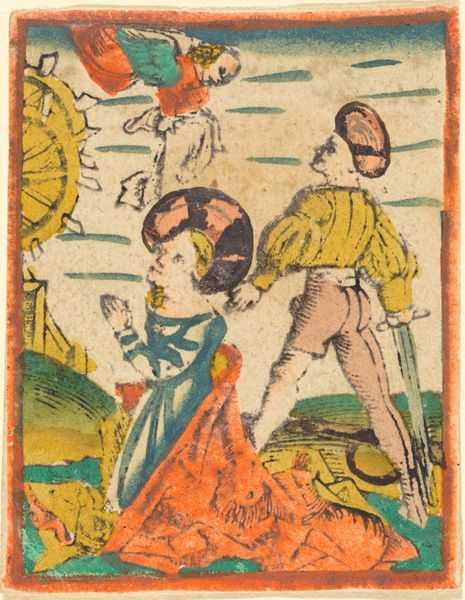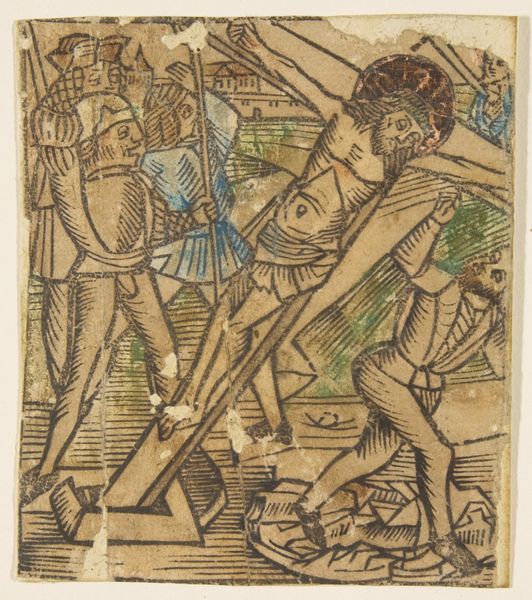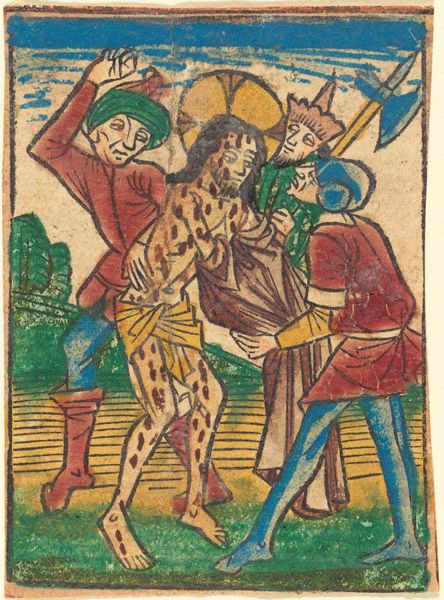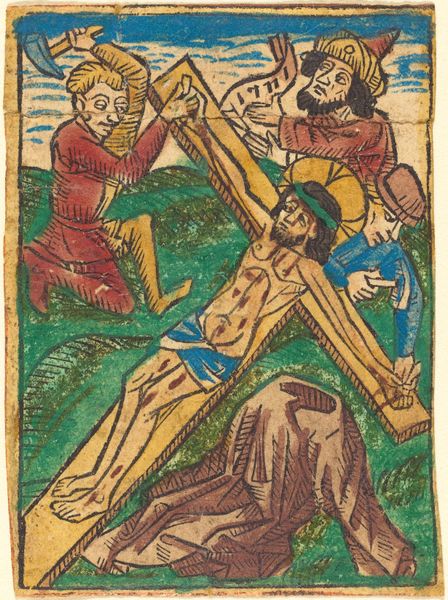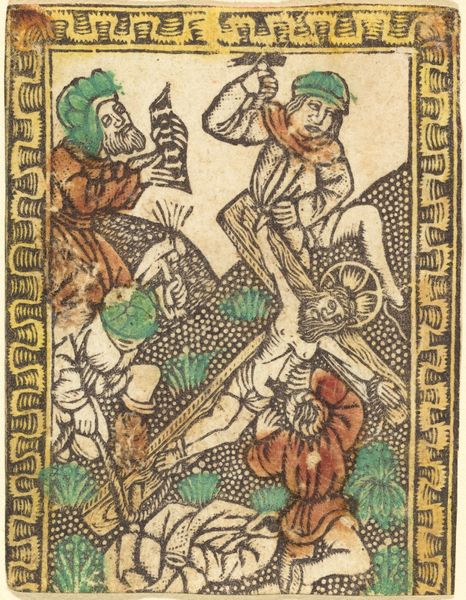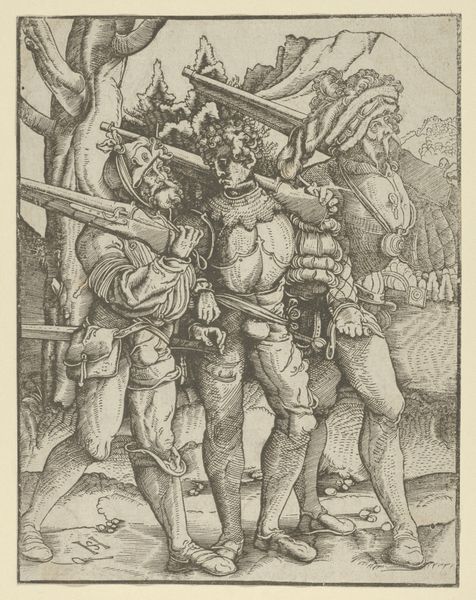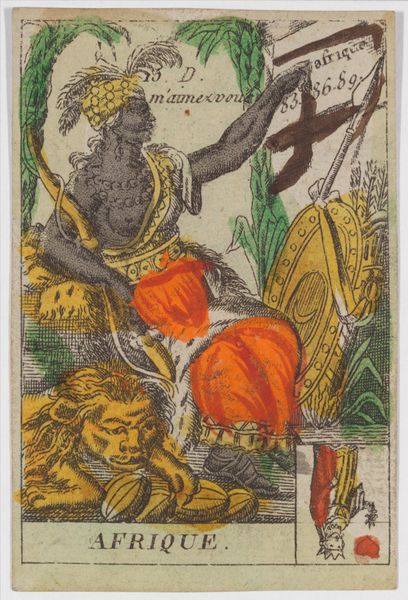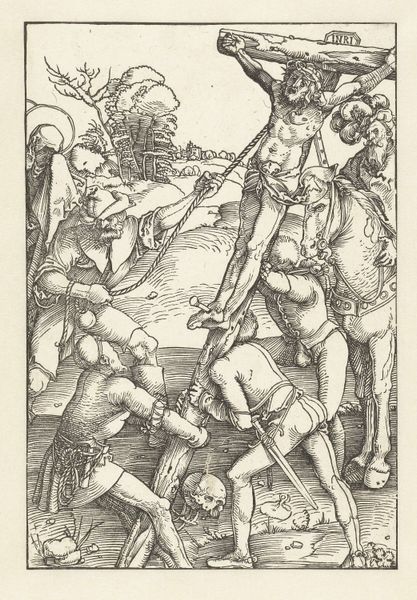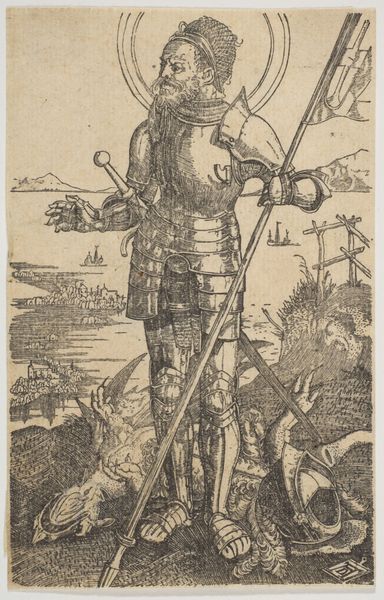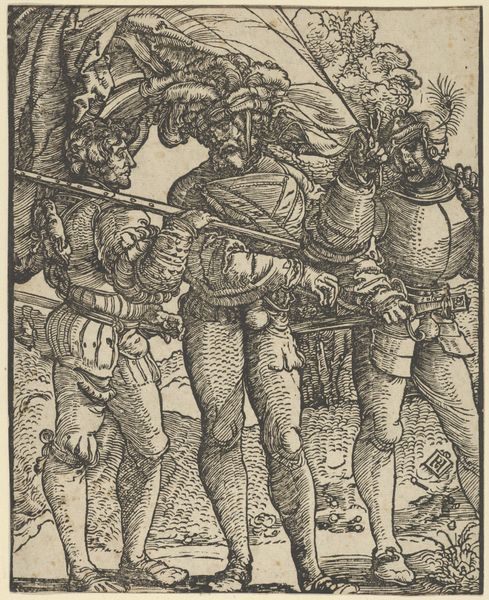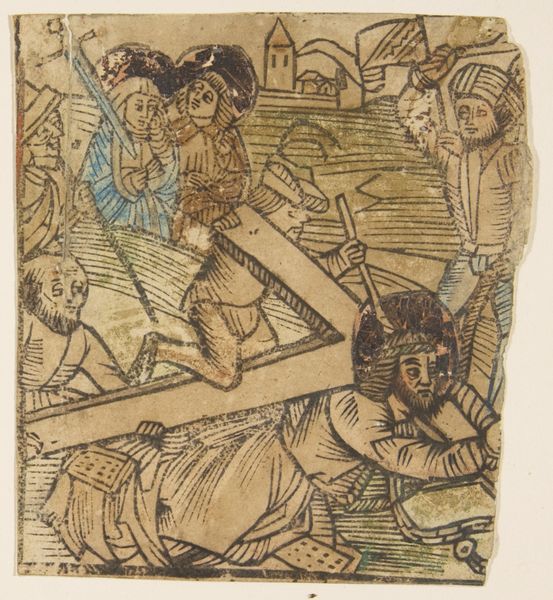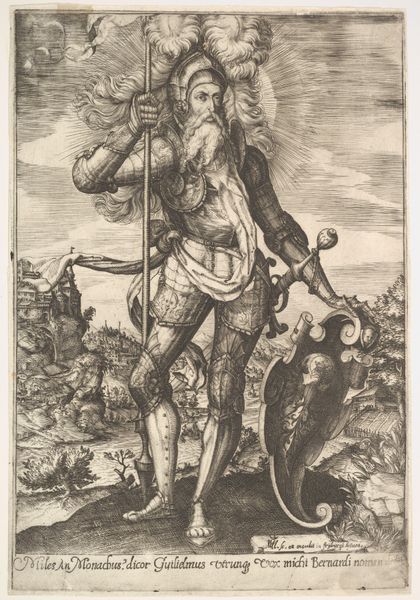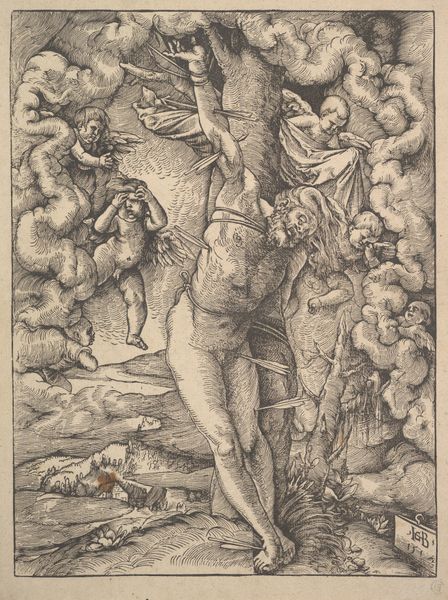
Preparation for the Crucifixion (Schr. 662a) 15th century
0:00
0:00
drawing, print, woodcut
#
drawing
#
medieval
#
narrative-art
# print
#
figuration
#
woodcut
#
men
#
history-painting
#
northern-renaissance
Dimensions: sheet: 3 9/16 x 2 1/4 in. (9.1 x 5.7 cm)
Copyright: Public Domain
Editor: Here we have, "Preparation for the Crucifixion," a 15th-century woodcut drawing, of anonymous origin, currently housed at the Metropolitan Museum of Art. What immediately strikes me is the raw depiction of suffering amidst a relatively commonplace scene. The starkness is quite confronting. How do you interpret this work in its historical context? Curator: Well, seeing this print through a historical lens demands that we consider its purpose beyond mere aesthetic appreciation. Woodcuts like this, widely produced during the 15th century, played a significant role in disseminating religious narratives to a largely illiterate populace. This image of Christ's suffering wasn't just art; it was a powerful tool for shaping belief and reinforcing social structures. Notice how the figures surrounding Christ are actively participating in his torment. What does that say about the image’s intended impact on viewers? Editor: It's chilling. It implicates everyone, almost as if the act of witnessing makes you complicit. And the presence of what appear to be angels above seems to highlight that dichotomy further. Were these prints primarily for private devotion or for public display? Curator: A bit of both, actually. Smaller prints were often used for personal devotion, pasted into books or kept as individual images. Larger, more elaborate versions might have been displayed in public spaces, like churches or town squares. But consider the economics of the time: prints made art accessible to those who couldn’t afford paintings, democratizing religious imagery. How did this increased accessibility shape the reception and understanding of biblical stories? Editor: That's a compelling point. Mass production transformed not only the art world, but broadened and redefined spirituality itself. Thanks for highlighting how this image acted not just as a religious representation but as a complex cultural object! Curator: Indeed. And thinking about this as a crafted item for consumption really highlights the role of image in power dynamics, I find that insight deeply rewarding.
Comments
No comments
Be the first to comment and join the conversation on the ultimate creative platform.
